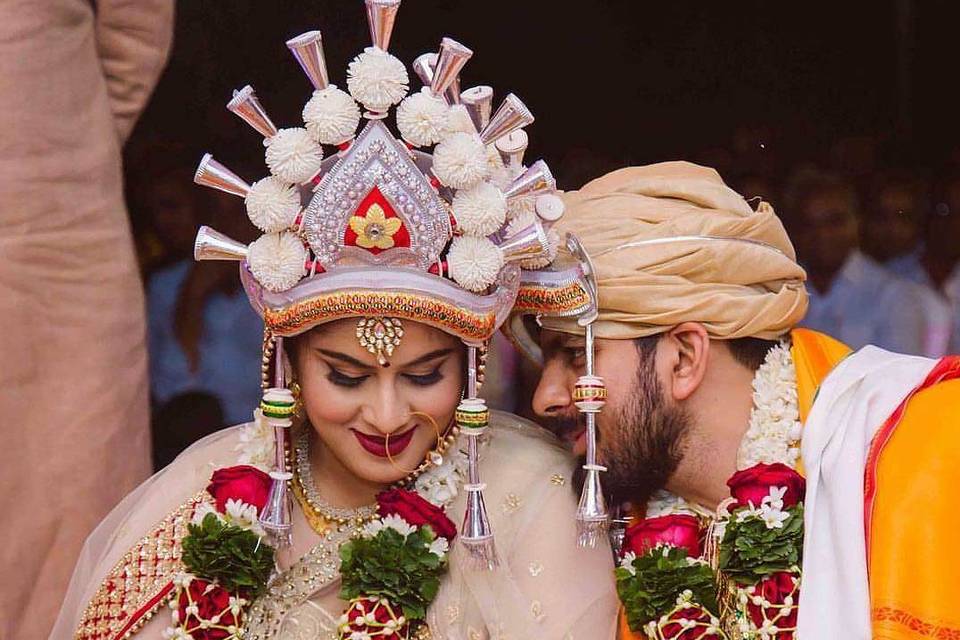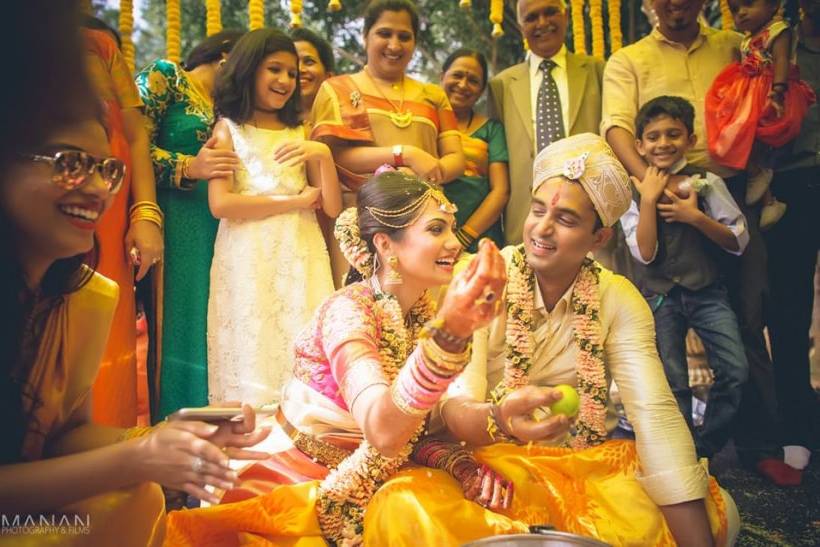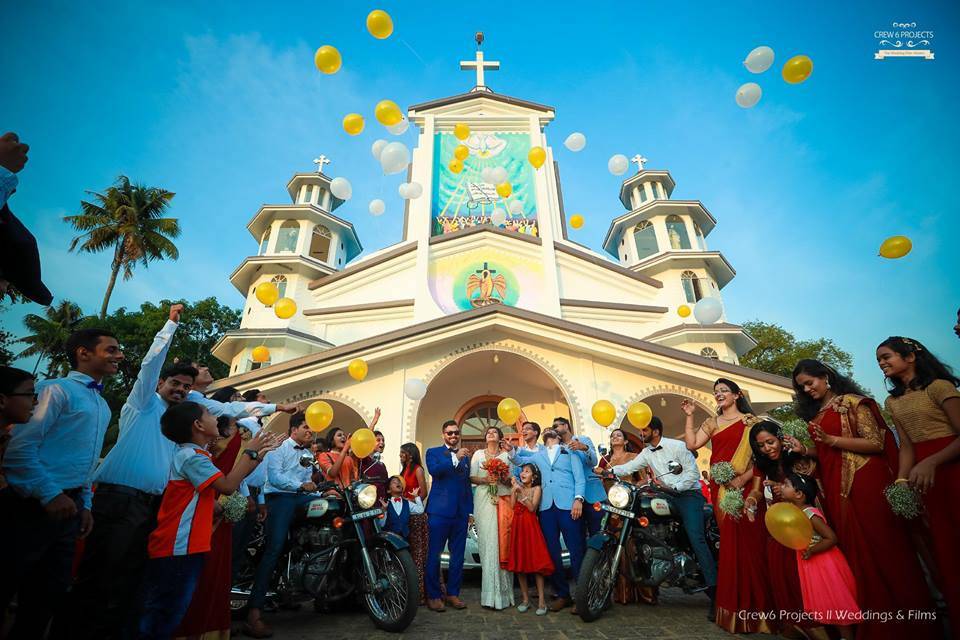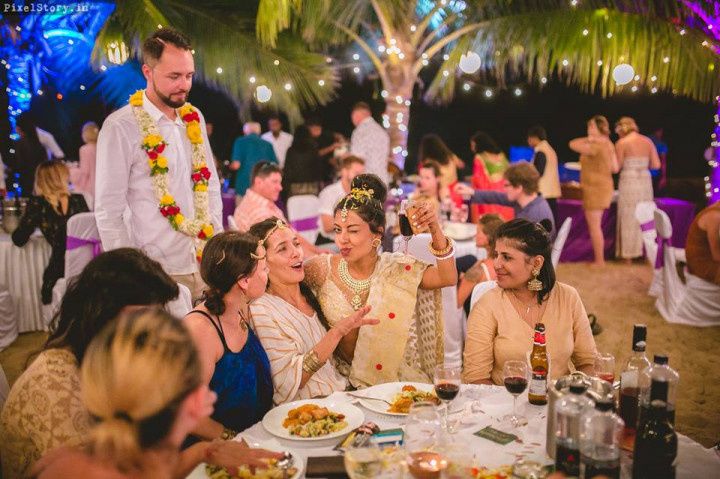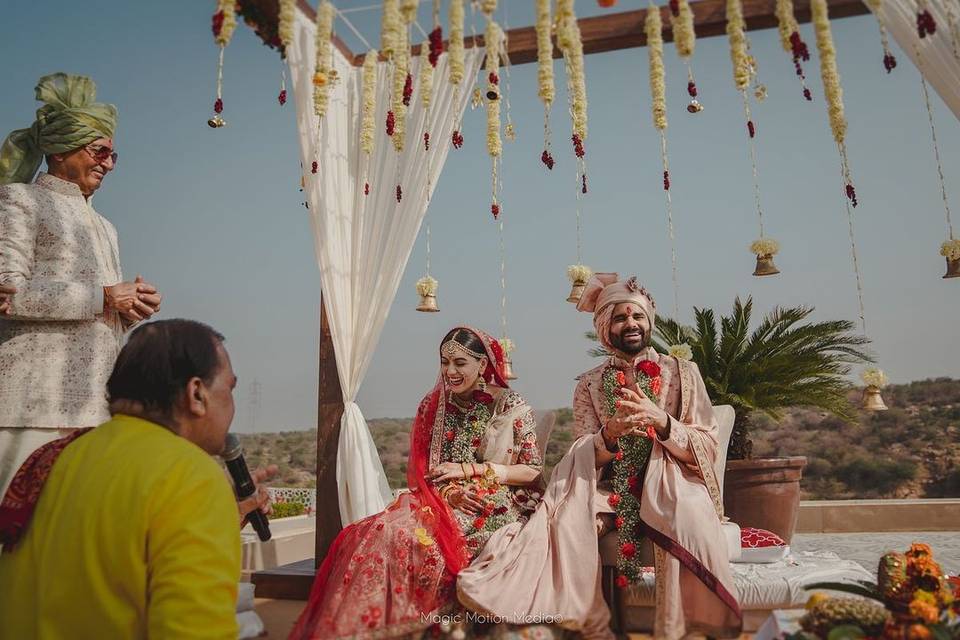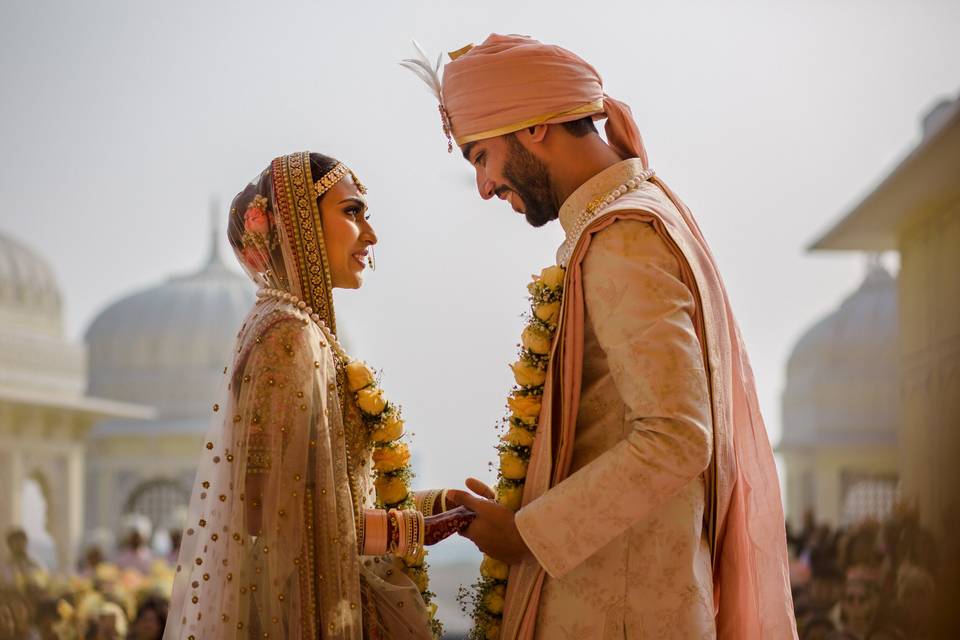Decoding Anand Karaj: a Silk Route of the Sikh Wedding Ceremonies
Sikh wedding ceremonies are full of life & fervour. Here is a walk through the Anand Karaj ceremony for a better look into the serene customs.
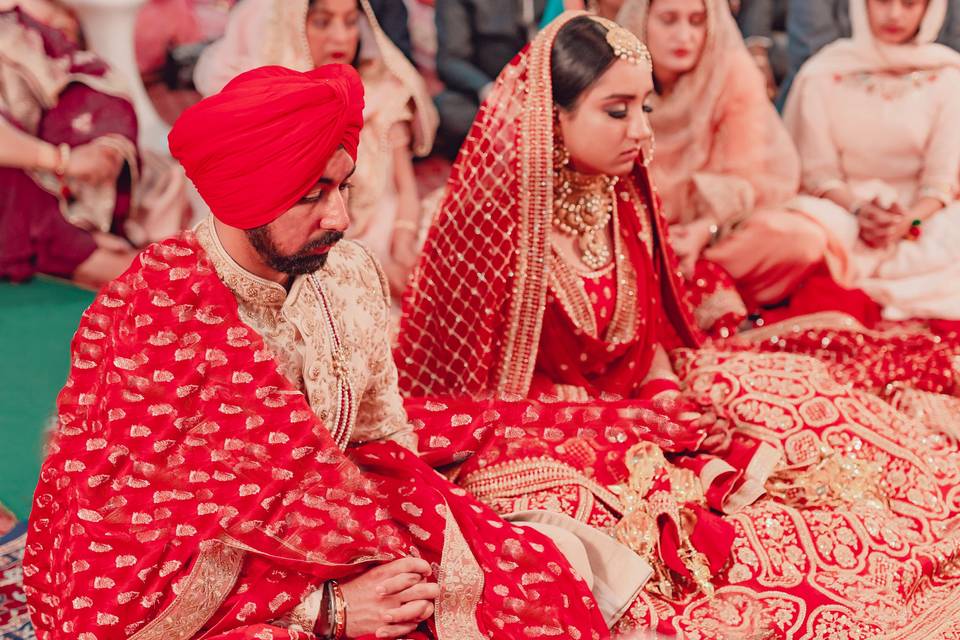
Anand Karaj is the religious name for a Sikh Wedding ceremony. It is considered one of the purest, graceful and tranquil experiences, held under the pristine white dome and in the presence of the holy book, ‘The Guru Granth Sahib Ji’. Like any other traditional Indian wedding ceremony, Anand Karaj also has Pheras (called Laavan or Laavan Phere) to solemnise the wedding.
Anand Karaj, the ceremony where both the families of the bride and the groom, celebrate the union of two kindred spirits in a quaint setting amidst the presence of God. Anand Karaj is one of the most sacred way of tying the knot, a long-living tradition that all Sikhs and even North Indians are now opting for.
A joyful union of two souls, a Sikh wedding ceremony usually spans across a few days. The pre and post-wedding ceremonies include a mixture of rituals. Let us learn in detail about each of these ceremonies.
Pre-Wedding Rituals
A trail of mesmerising yet fun pre-wedding rituals makes the Anand Karaj all the more beautiful.
Roka
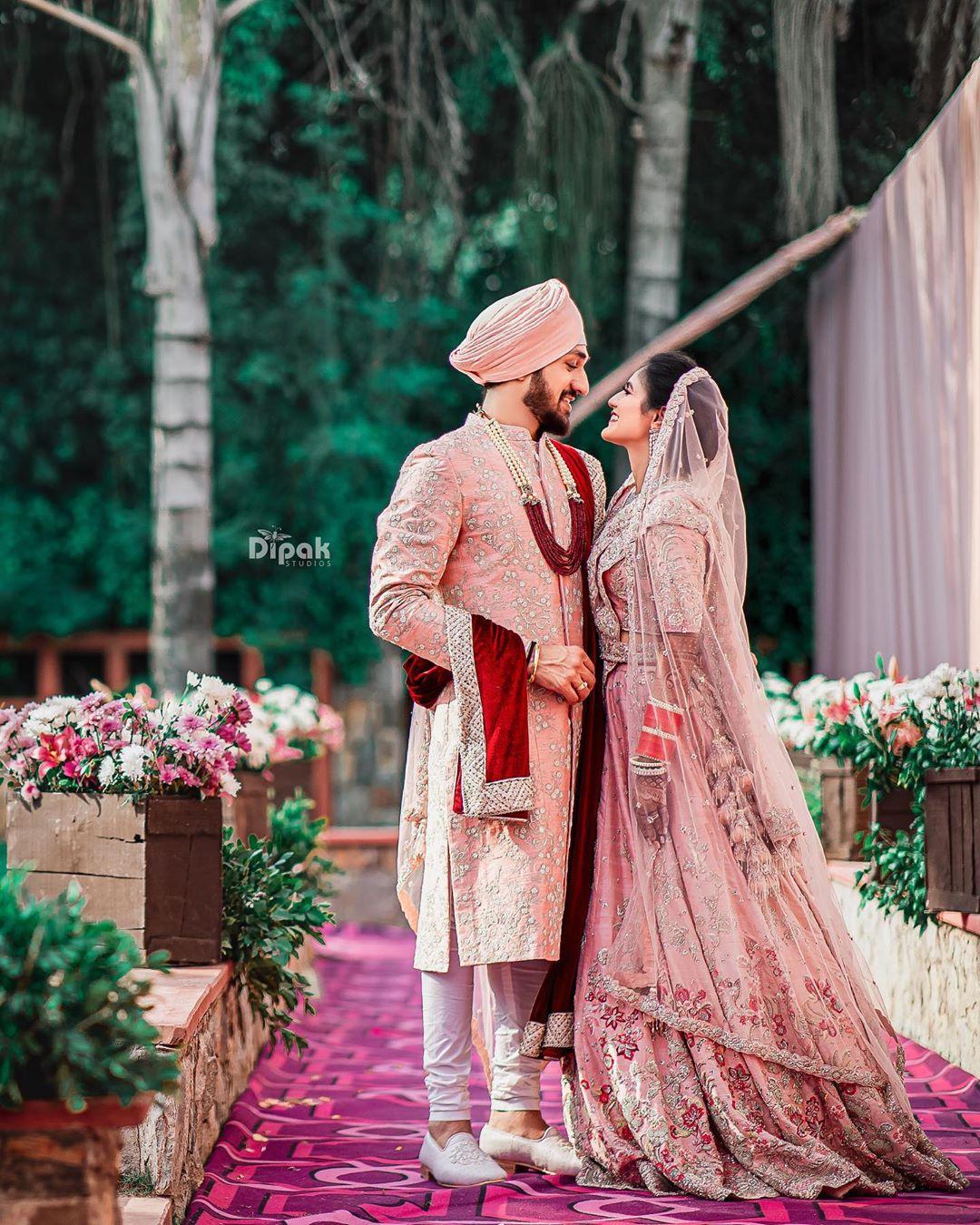
To begin the wedding, both the parents of the bride and the groom must bless this sacred union. The literal as well as the traditional meaning of this custom is to stop the bride and groom from seeing any further prospective partners. This is officially the commencement of the wedding ceremonies. When the bride’s family gives the groom some gifts and sweets, the ceremony is called Roka. When the groom’s family gifts something to the bride, it is known as Thaka.
Kurmai/Chunni Ceremony

Image Courtesy: Events by Srishti
This is followed by the Kurmai ceremony where the mother of the groom or some elder from the groom's family visits the bride and showers her with a lot of gifts and puts a beautiful dupatta around her. This dupatta often flaunts heavy phulkari embroidery or could be an heirloom piece as well. This custom signifies that the girl is ready to be a bride soon and she is accepted with love and honour in her in-laws' family.
During this ceremony, the groom's family also gifts the bride her wedding outfit along with jewellery and so on.
Engagement/Sagan
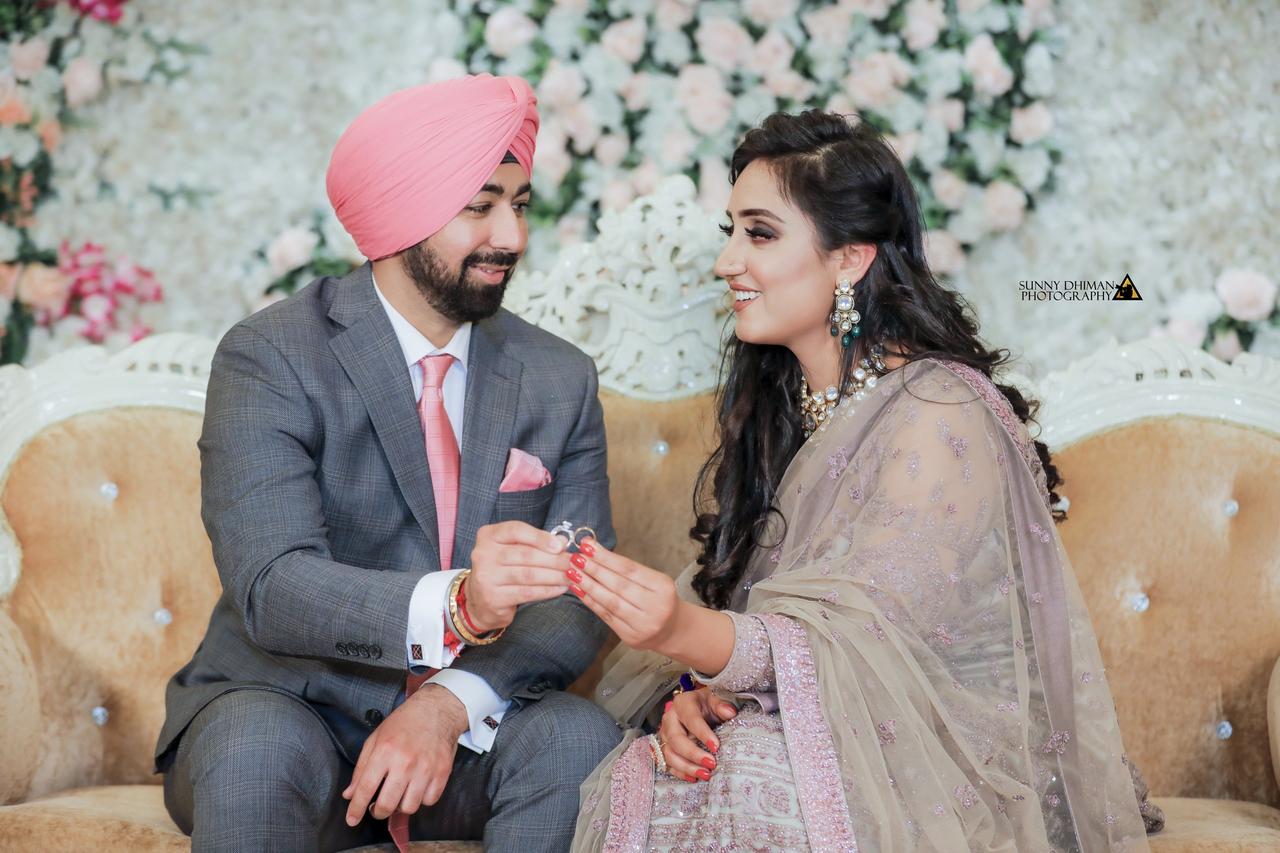
The traditional name for the formal engagement ceremony is Sagan. Before the engagement formalities begin, the priest offers a short prayer, also known as Ardas. During the engagement ceremony, the couple exchange rings. The bride’s family gifts the groom a Kada and a Kripan - both of which are an important part of the Sikh heritage and have to be carried on the day of the wedding. The families also exchange gifts like sweets, clothes, coconut, dry fruits and jewellery.
Akhand Paath

Image Courtesy: Sutej Pannu Photography
The Akhand Paath is a puja held by both the families in their respective homes. This is often held in the gurudwara too and is a significant ritual of a Sikh wedding.
Kirtan

Image Courtesy: Shades Photography
Prior to the Anand Karaj, the bride and groom’s families feel it is a good omen to host a Kirtan at their respective residence. Experienced religious musicians of the local Gurudwara sing ‘Gurbani’. The entire atmosphere is extremely tranquil and serene.
Haldi/Vatna & The Mehndi ceremony
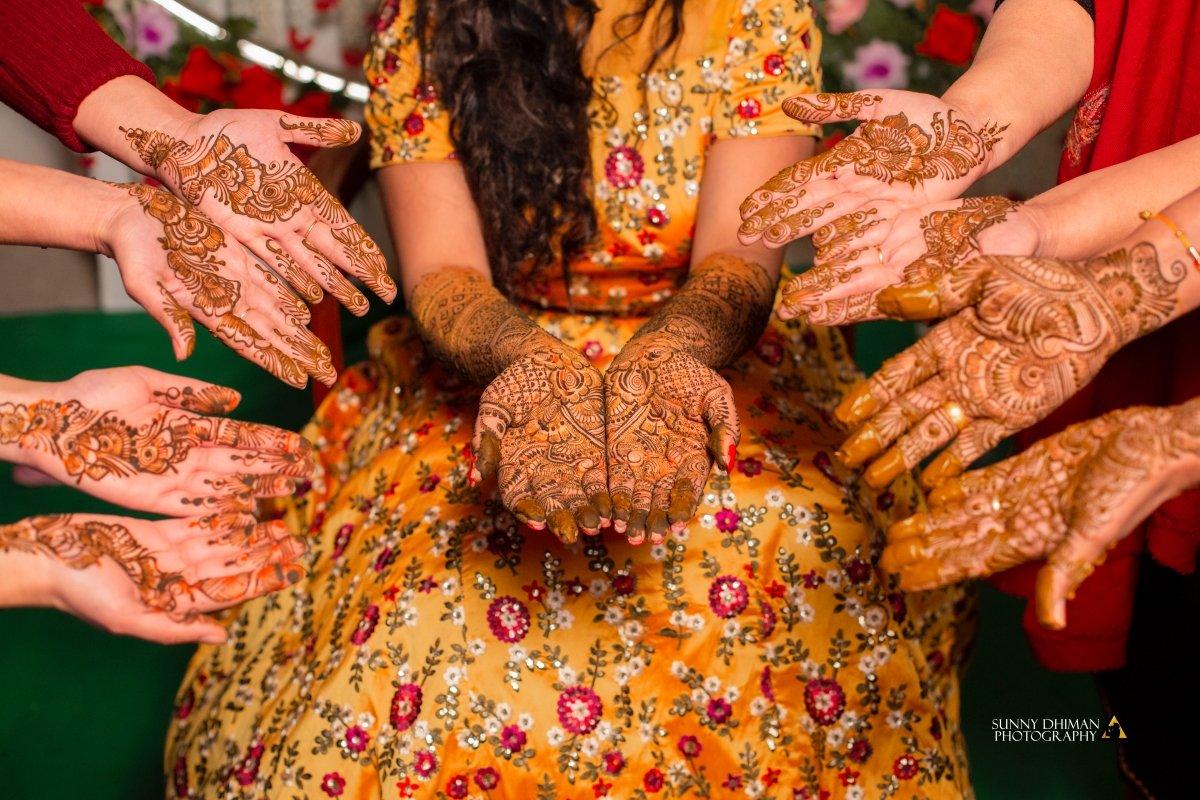
A few days before the wedding, the family of the bride and groom apply a paste of curd/milk, oil and turmeric on their face and body. The Haldi/Vatna ceremony is the pre-wedding ceremony that gives the bride and the groom a much needed pre-wedding glow-up. During this ceremony, ladies of the house sing traditional songs.
The Haldi ceremony takes place at the respective homes of the bride and groom. Right after the Vatna, the Mehndi ceremony is celebrated on the same day. Millennial couples have however often celebrated it together at one place especially with the rise in destination weddings.
Gaana
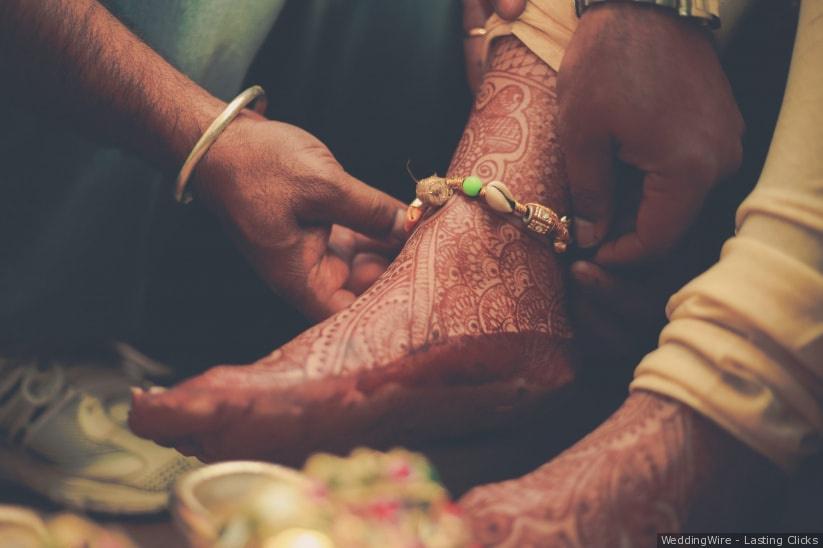
In this traditional ceremony, a red thread (Gaana) is tied on the groom’s right wrist, and the bride’s left wrist or maybe even their foot - a new, evolved way around the traditions. It is believed that the Gaana will ward off the evil and protect them.
Ghadoli

After this, the groom’s sister-in-law (bhabhi) visits a Gurudwara close by to fill a utensil called Ghadoli with holy water. This water is then used to bathe the groom after their Haldi ceremony.
This ceremony is not a part of a typical Jatt Sikh wedding, however, there are many sub-sects who follow this as a part of their ritual.
Chura Ceremony or Kalire Ceremony
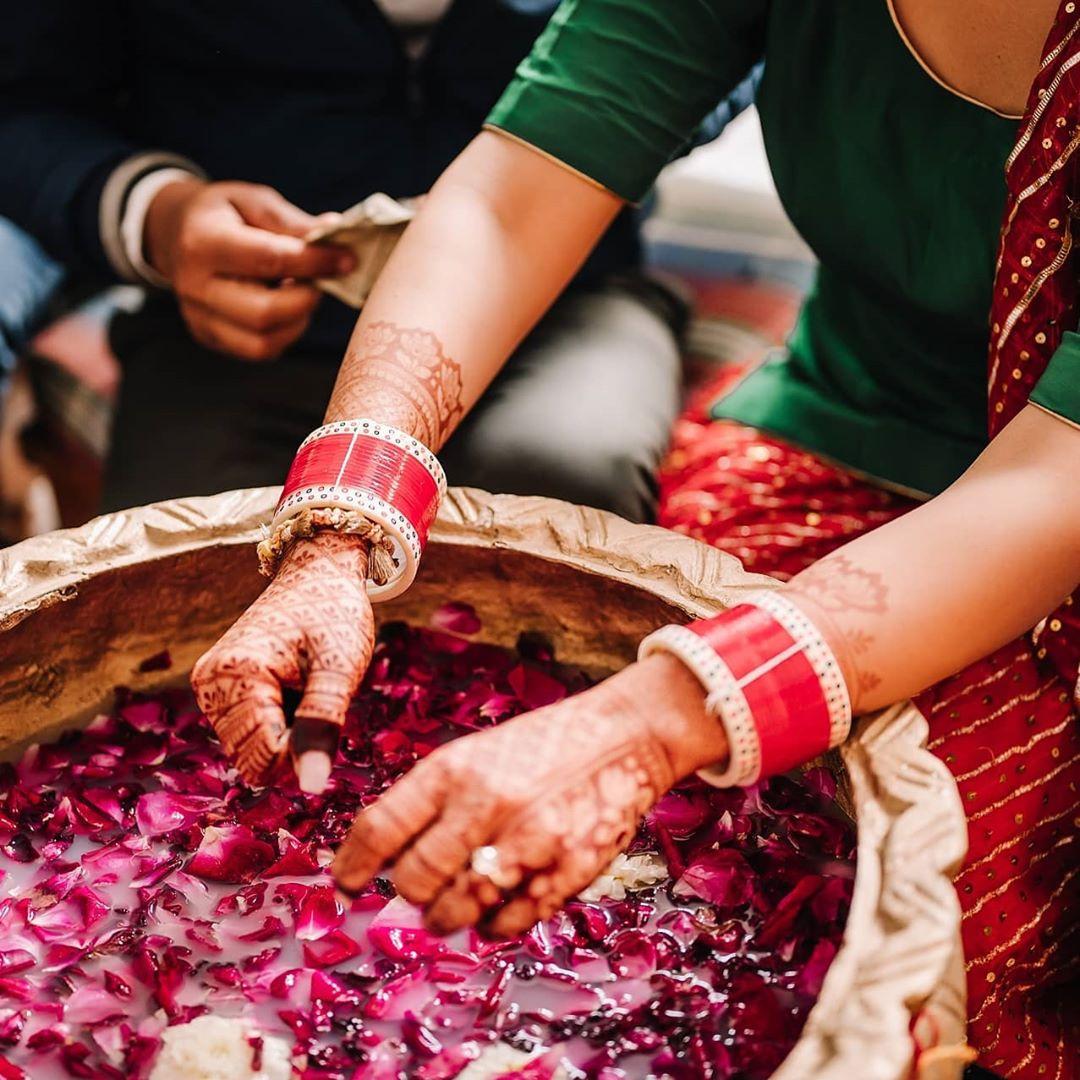
The bridal Chura (set red bangles) is the first and most notable symbol of a newly married woman. The bride’s maternal uncle (mama) is the one who gifts these bangles to the bride. The Chura is dipped inside milk and the bride is not allowed to look at it while the maternal uncle puts it on her hands. After the Chura ceremony, the bride’s sisters and bridesmaids tie Kalire to the Chura and this symbolises prosperity and happiness.
Jaggo

Image Courtesy: Natasha Kishore
The Jaggo ceremony is as literal as it gets - it means to stay awake all night long. Are you wondering stay awake for? During the Jaggo ceremony, the bride and groom's families stay awake in their respective homes and sometimes they also visit the neighbours. Folk songs are sung in full swing with dhols and nagadas and they dance and party the night away to celebrate the upcoming big day. This happens right before the day of the wedding.
Sehra Bandi
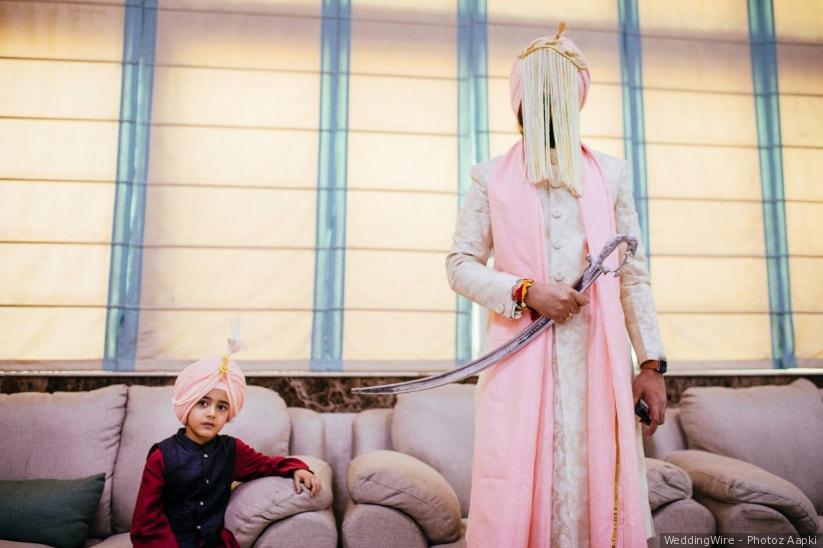
The morning of the wedding, the groom’s father ties a turban to the groom's head right before they depart from home. He is then handed over a sword that he has to carry throughout the wedding.
The groom’s sister then ties a Sehra, which is usually made of pearls or ribbons, but these days the grooms also flaunt floral Sehras around the turban that is covering the face. Just before the groom is leaving for his wedding, his bhabhi (sister-in-law) applies Surma/kajal to his eyes, which is a symbolic gesture to get rid of any negative energy.
Baraat
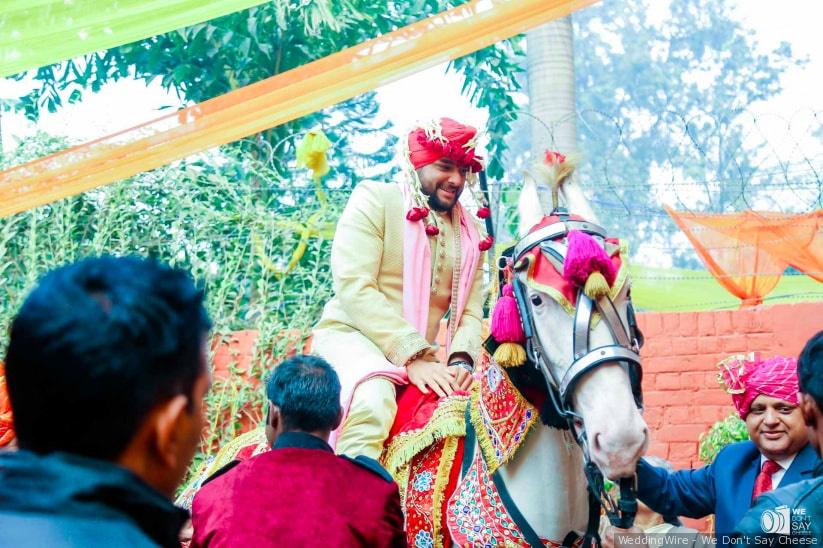
According to traditions, the groom travels to the wedding venue on a Ghodi (female horse). All the groom’s family and friends accompany him to the venue with the wedding band baja following suit. The music is in full fervour and the baraatis dance their heart out.
Milni

Image Courtesy: Michael Studio
Once the Baraat reaches the venue, the bride’s family greets and welcomes them at the gate. Each family member of the Baraat is then introduced and the bride’s family gifts them a garland along with a hug and maybe even some sweetmeats.
The Wedding Ceremony - Anand Karaj

Image Courtesy: Shades Photography
The Anand Karaj is the main Sikh wedding ceremony and this takes place in the Gurudwara ideally. However, millennials have celebrated their Anand Karaj in their backyards or even out in the open in front of the Guru Granth Sahib (the Holy book of the Sikhs). The ideal place as suggested by the Golden Temple's SGPT is to do it is in a place that is holy and does not have alcohol and other such things around.
The Anand Karaj starts with an Ardas again and then the bride and groom sit down in front of the holy book and touch the floor with their forehead to worship. The ideal time that is considered holy to host the Anand Karaj is in the morning before 12 pm. This time is considered to be auspicious and is a tranquil hour of the day to mark the new beginnings.
Lavan Phere
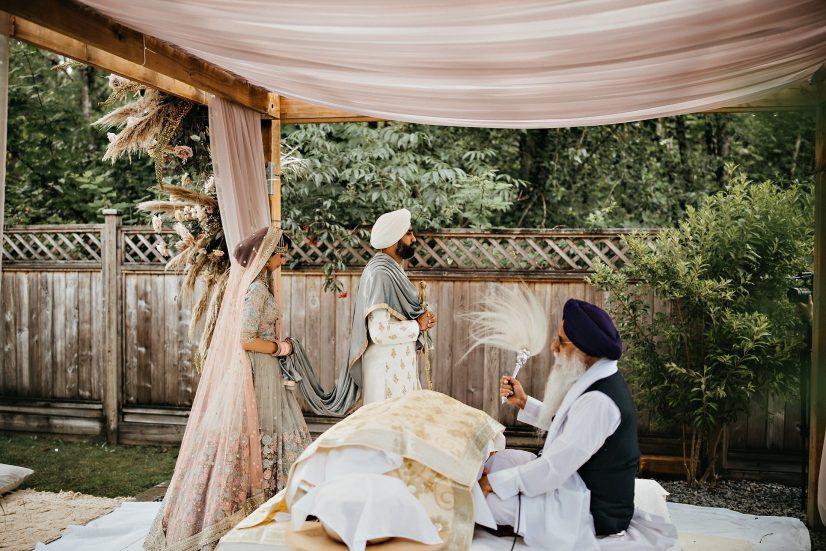
Image Courtesy: Amrit Photography
After a long list of pre-wedding rituals, the bride and groom finally get married in a traditional Sikh wedding. The holy book Guru Granth Sahib Ji (Baba ji) is respectfully placed at the wedding venue (Gurudwara or any other place) and the couple takes 4 pheres around the holy book.

Image Courtesy: Real Bride Shaweta Khosa
These pheres done in a clockwise direction are called the 4 Laavan and it is the most significant part of the wedding. In the above picture you will find the meaning of each Lavan. After the Lavaan the bride and groom are considered married. These pheres are then followed by kirtan and Ardas.
Post-Wedding Rituals
Right after the wedding the newlywed couple goes around taking the blessings of their loved ones and touching the feet of their elders for good wishes.
Doli/Vidaai
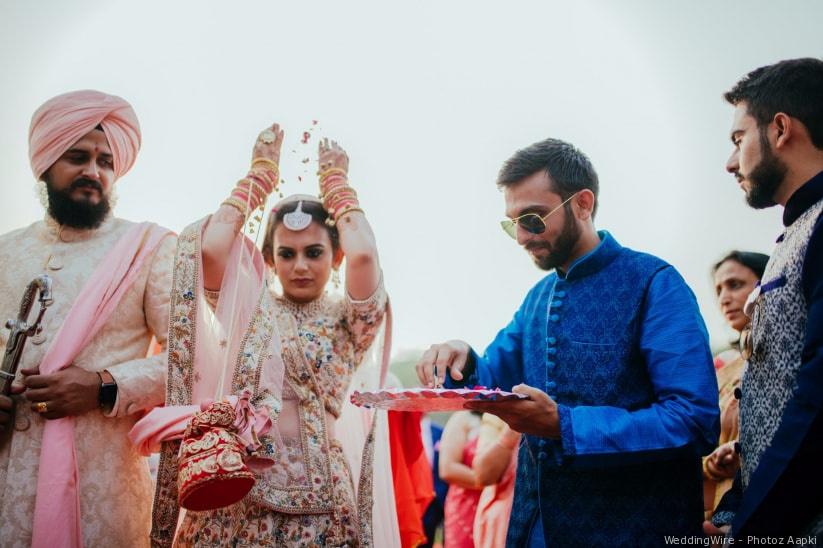
Traditionally, the bride would leave her parent’s house after sitting in a wooden palanquin, also known as a Doli. The bride throws puffed rice grains over her shoulders, praying that after she leaves her paternal home always prospers.
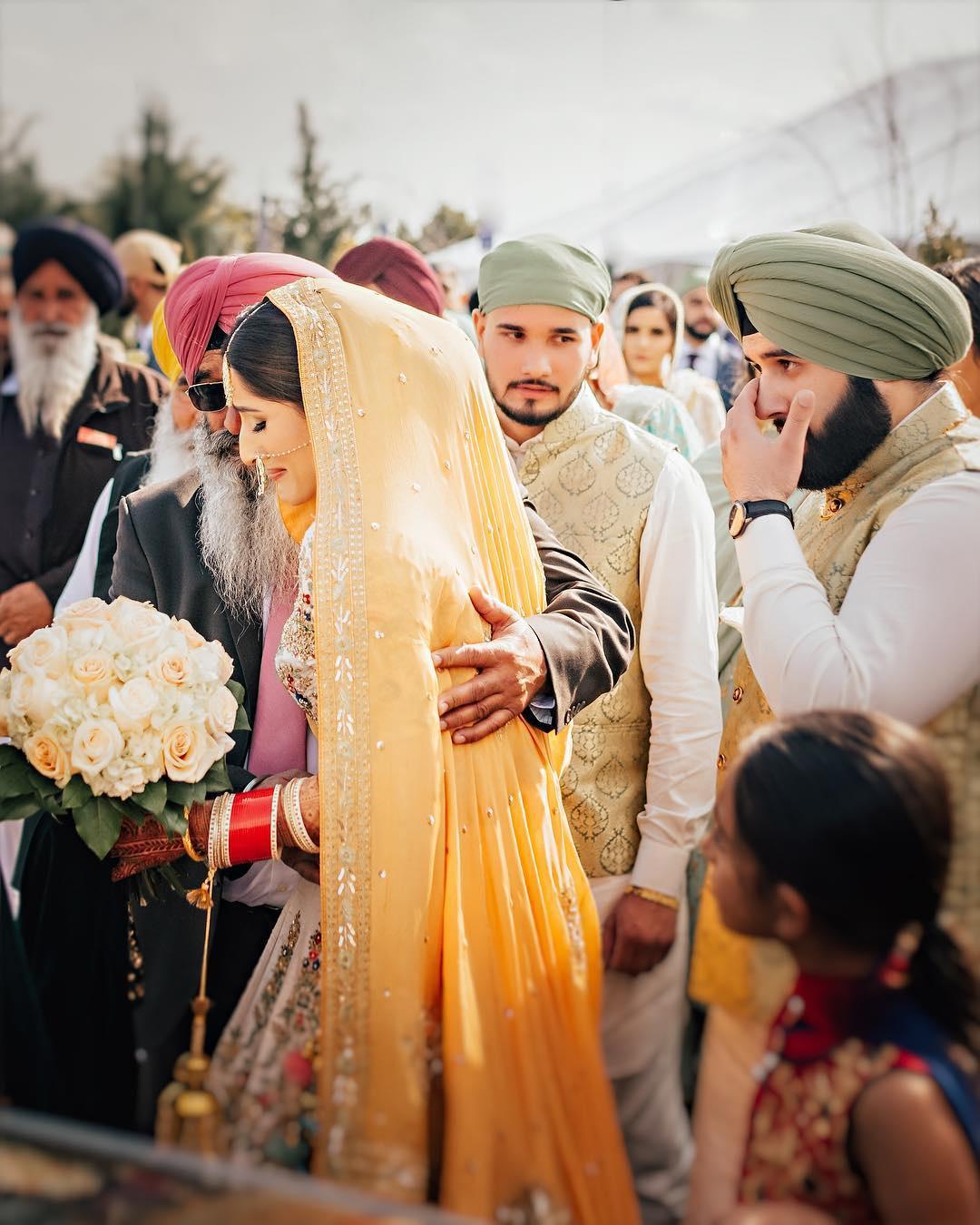
Image Courtesy: Amrit Photography
The bride then gets into a nicely decorated car with her husband and drives to her new home. This is an emotional ceremony as it involves the bride and her family saying their goodbyes and bidding her farewell to start her new married kife at her in-laws'.
Once the bride reaches her new home, she’s given a warm welcome by her new family.
Pag Phera

Image Courtesy: Sutej Pannu
Once the post-wedding ceremonies are done with all the wedding games and the Joota Chhupai fun, the bride and groom then visit the bride's house (mayka). This small family reunion is a gesture to show her family that she is doing fine and happy and also a moment when she ensures that her family is doing fine after she left.
There are many Sikh families who host a reception after the wedding. However, the reception is not a part of the wedding or the post-wedding ceremonies. It is just a formal celebration that includes the friends and family members who were not invited to the main wedding or often to officially introduce the bride in the groom's side of the family who could not be a part of the baraat and the wedding.
After the wedding, at any point in time when the bride decides to cook her first meal, it is called at the Meetha Prasad. In the olden times, this used to be right after the wedding because the bride would officially take over the kitchen of the house and manage everything. But in recent times, owing to a honeymoon or the MILs pampering the newlywed daughter in law, the timeline of the Meetha Prasad has evolved.
Anand Karaj is a beautiful amalgamation of love, life and passion and spiritual sanctity. A ceremony that takes place during the day amidst the company of loving friends and family in the presence of the almighty. Anand Karaj as a means of getting married is now culture and tradition that even the non-Sikh couples are opting for. For couples who want to get married during the day with only a few close relatives and friends, find this traditional form of getting married more feasible and closer to their personal liking.
While Anand Karaj is a blissful union of two souls, if you feel we have missed out on an important ritual, please leave a comment below. We also recommend reading the larger set of Punjabi wedding traditions.
Note: With valuable inputs from Shaweta Khosa & Geet Kaur.
Getting ready for a breathtaking Anand Karaj ceremony? Find your perfect bridal outfit from the best vendors near you.




